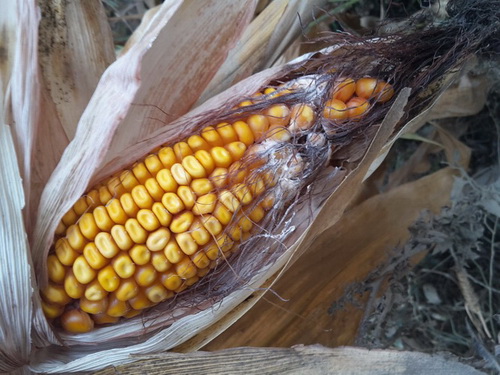



Transforming Africa’s livestock sector is key to food security
Without sustainable growth of its livestock sector, Africa is expected to import up to a fifth of meat and milk within the next 30 years, according to the Malabo Montpellier Panel.Africa will be unable to meet demand for meat and milk by 2050 and benefit from growth in the livestock sector unless countries adopt new policies and innovations, a new report has found.
Meat consumption per capita across Africa is expected to increase from 19kg a year to 26kg a year by 2050 while demand for milk is likely to increase from 44kg per person per year to 64kg.
But while Africa’s livestock sector accounts for as much as 80 percent of agricultural GDP in some countries, on current projections, the continent is likely to need to import 20 percent of the beef, pork, poultry and milk needed by an estimated population of 2.2 billion in 2050.
Agricultural experts at the Malabo Montpellier Panel analysed lessons from four African countries that have sustainably grown their domestic livestock sectors to provide recommendations for unlocking the economic potential of animal agriculture and becoming self-sufficient.
“With rising incomes and urbanisation quickly shifting dietary habits across Africa towards increased meat consumption, the livestock sector will play a crucial role in ensuring food and nutrition security and fostering economic growth in the years ahead,” said Ousmane Badiane, co-chair of the Malabo Montpellier Panel.
“In this new report, we review the policy and institutional innovations that can strengthen Africa’s livestock sector and provide a major opportunity to boost economic growth, improve livelihoods and advance progress towards development targets.”
The Panel highlighted options for promoting sustainable growth in the livestock sector, drawing on the experiences of Ethiopia, Mali, South Africa, and Uganda in terms of institutional and policy innovation as well as programmatic interventions.
For example, Uganda bolstered its dairy sector to maintain self-sufficiency in milk through dedicated policies, including the Dairy Master Plan, which involved restructuring and privatising the state-owned dairy processing company Dairy Corporation.
In Ethiopia, the livestock sector was made a national priority with its own government department when the Ministry of Livestock and Fisheries was established in 2013, while the Ministry of Agriculture coordinated a Livestock Master Plan, covering livestock production and fisheries, veterinary services, and pastoral development. Carefully adapted policies for pastoralist and non-pastoralist producers and an integrated approach to building capacity in animal health, research, and marketing attracted significant investment both from the private sector and development partners, further ensuring that the sector thrives.
“The expansion of Africa’s livestock sector will create new opportunities for the continent’s rural populations, especially women,” said Noble Banadda, Panel member and Professor and Chair of the Department of Agricultural and Bio Systems Engineering at Makerere University.
“For example, households in Uganda saw their dairy income rise by more than 150 percent through the establishment of regional collection and quality control hubs under the East African Dairy Development project, which allowed farmers to negotiate better prices.”
The report also reviewed challenges facing Africa’s livestock sector ranging from feed quality to animal health and food safety issues, as well as highlighting the role of livestock in the empowerment of women.

“Productivity, health, and sustainability of livestock must be jointly addressed” said Joachim von Braun, co-chair of the Malabo Montpellier Panel. “This requires broad based innovations especially in animal nutrition, vet services, and digitisation of markets.”
The report made 11 recommendations covering policy, trade and finance as well as resolving conflict between pastoralists and crop farmers. Among these were recommendations to harmonise regulations and recognise the rights of herders as well as designing tailored financial services such as livestock insurance.
Panel members highlighted Nigeria’s Grazing Bill, which legalised the grazing rights of pastoralists as part of efforts to end ongoing deadly disputes between farmers and herders.
"Understanding the interactions between livestock and the environment is essential to developing a thriving, sustainable livestock sector, including assessing the extent of grassland degradation, land and water pollution, water scarcity, biodiversity loss, and emissions," said Nachilala Nkombo, Panel member and country director for the World Wildlife Fund (WWF), Zambia.
"With rangelands accounting for an estimated two-thirds of Africa's land surface, rangeland degradation from overgrazing is an important threat that can also contribute to conflict between farmers and pastoralists.
“Lessons can be drawn from past livestock growth in other developing regions to design and implement policies that effectively manage the trade-offs associated with livestock sector transformation and the environment. With human and livestock populations going up, regenerative approaches to livestock production and management will secure both key environmental services and the sector long-term.”
Elsewhere, countries such as Zimbabwe have responded to the need for more, better quality feed to sustainably grow the livestock sector. Some farmers who received training in the production of forage seeds in eastern Zimbabwe earned up to US$800 each for producing lablab, or Hyacinth bean, which also improved the quality of meat.
And simple mobile technology has been used in Ghana to provide veterinary information and advice to livestock farmers. Within two years of the information service CowTribe launching, vaccine coverage among its users increased from less than 20 percent to 65 percent, reducing livestock disease and loss, and adding an estimated US$300 to their annual household income.


